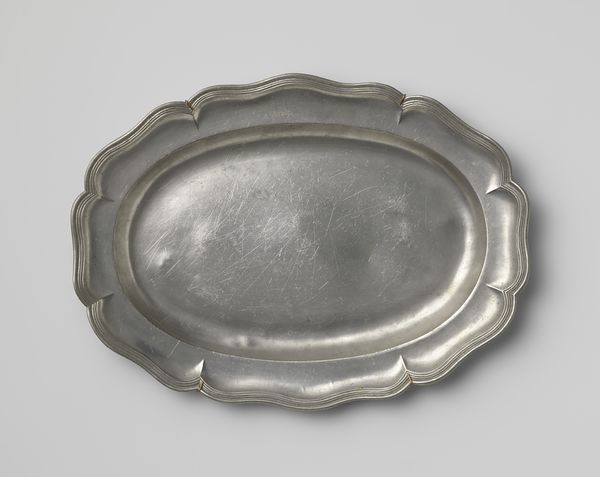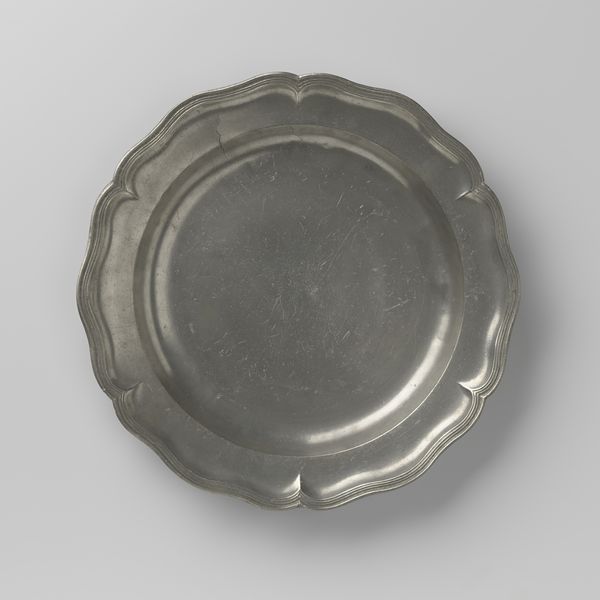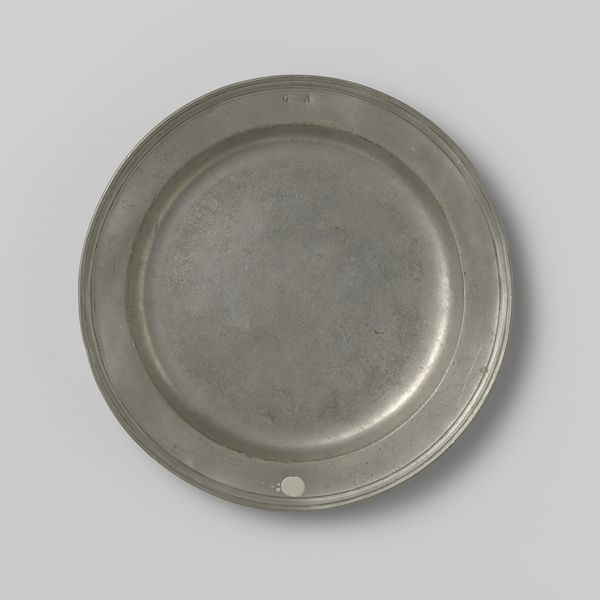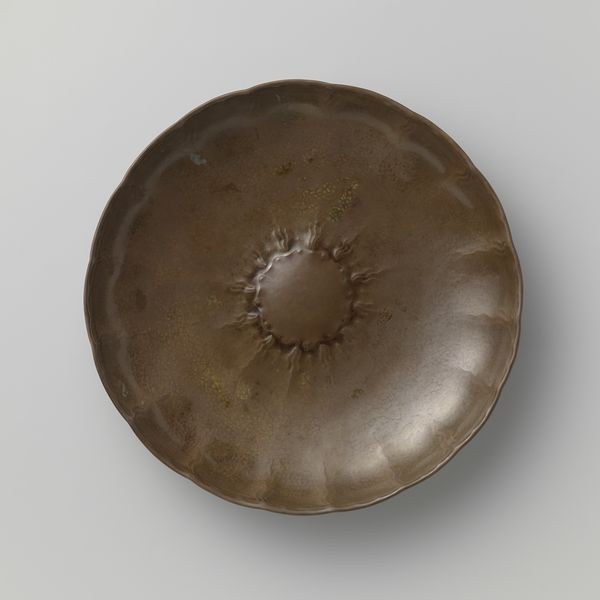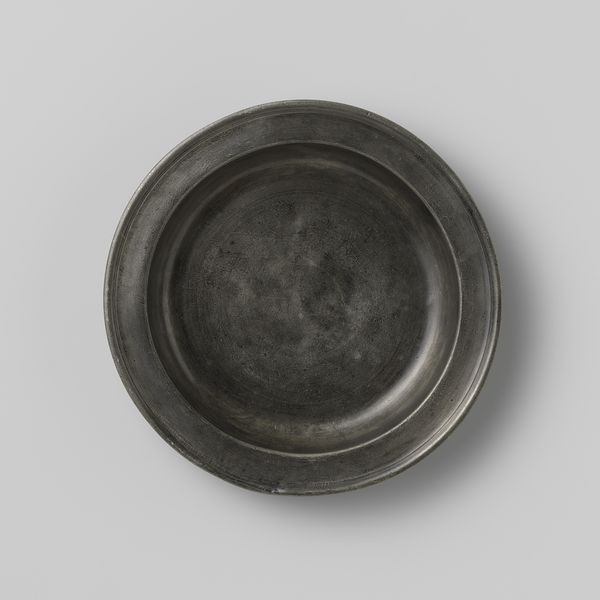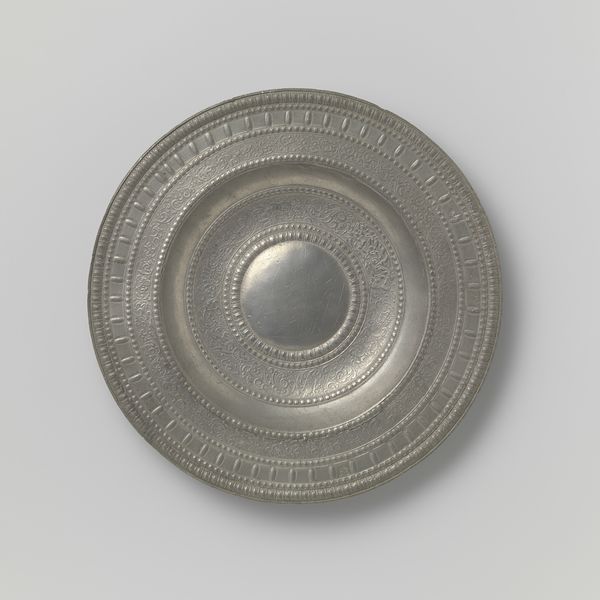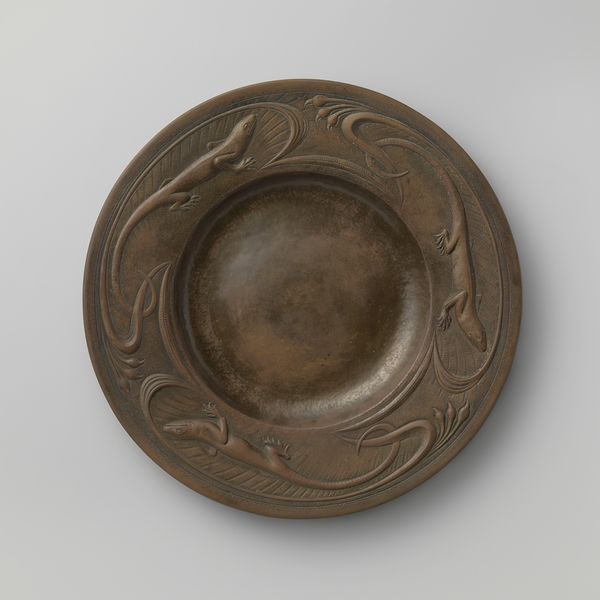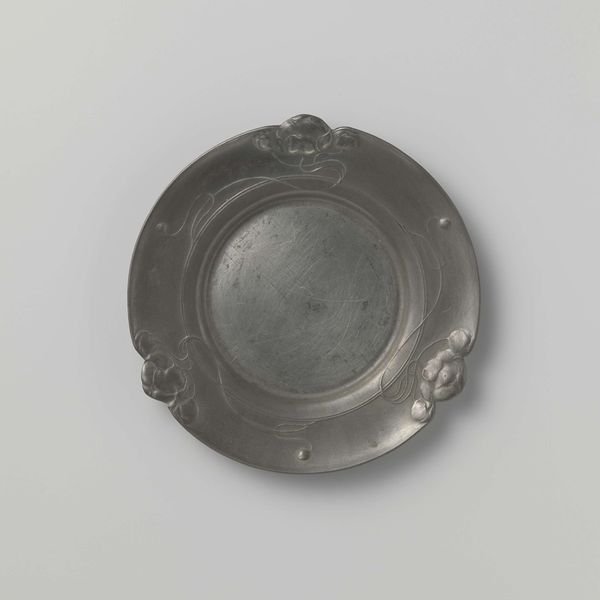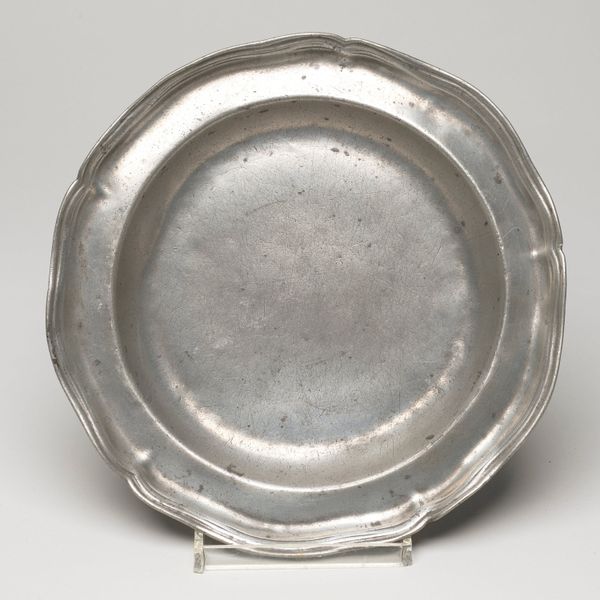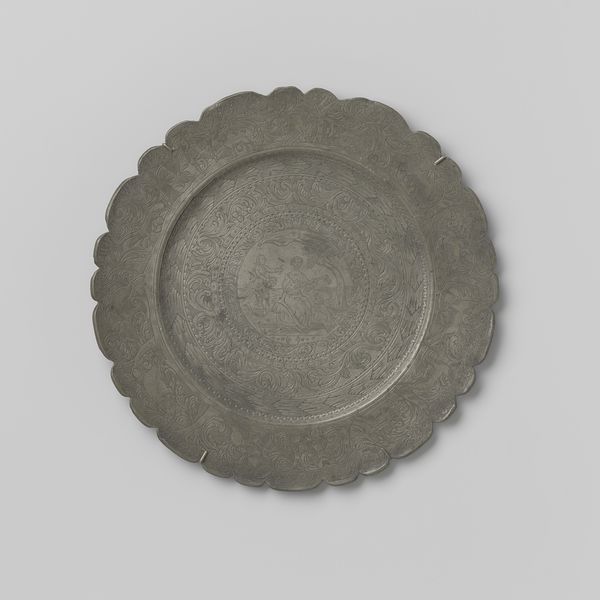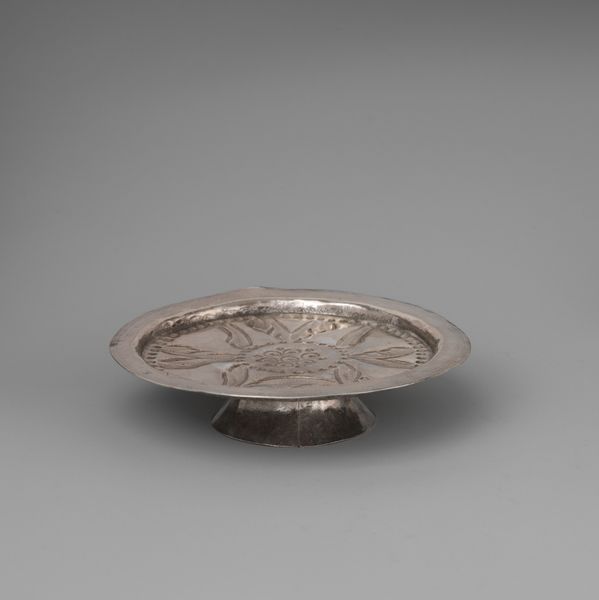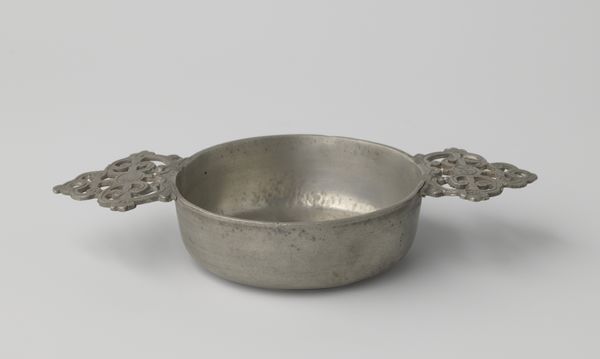
ceramic
#
ceramic
#
ceramic
#
decorative-art
Dimensions: height 5.8 cm, width 35.4 cm, depth 26.5 cm
Copyright: Rijks Museum: Open Domain
This oval pewter dish with a scalloped edge was made by Joiris Mathieu sometime before 1794. Pewter objects such as this were common in the 18th century, used to serve food and decorate the homes of middle-class people in Europe. Pewter was less expensive than silver or gold, but it still had a nice shine and could be shaped into fancy designs. Artisans making pewter objects belonged to guilds, which were like clubs that set rules for how things were made and sold. By the late 1700s, new ways of making things in factories began to change how pewter dishes were made. Instead of skilled artisans carefully crafting each piece, machines could quickly produce many identical dishes. Understanding the history of pewter objects helps us learn about how people lived, worked, and traded in the past. By studying objects like this, alongside guild records and trade documents, we get a glimpse of the changing economy and society of the 18th century.
Comments
No comments
Be the first to comment and join the conversation on the ultimate creative platform.
